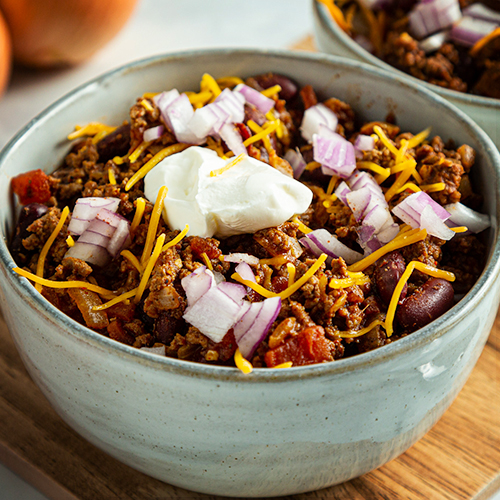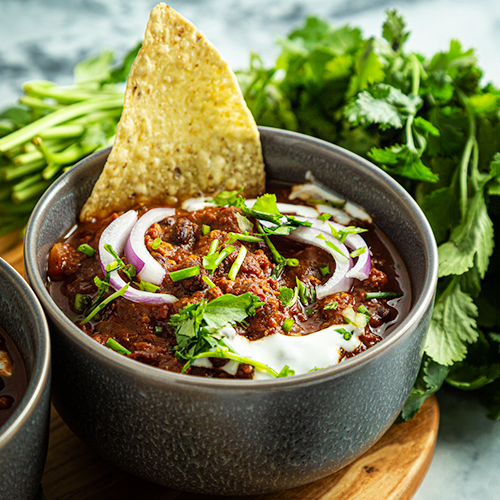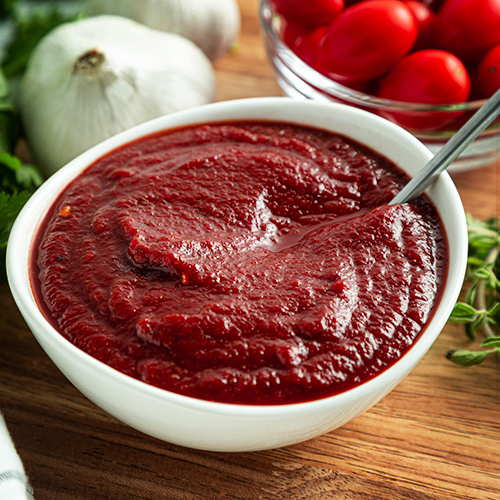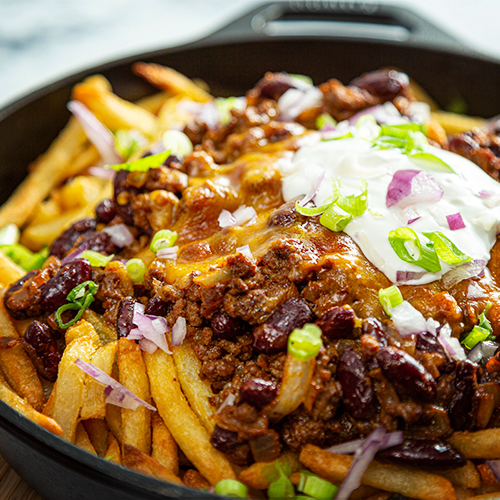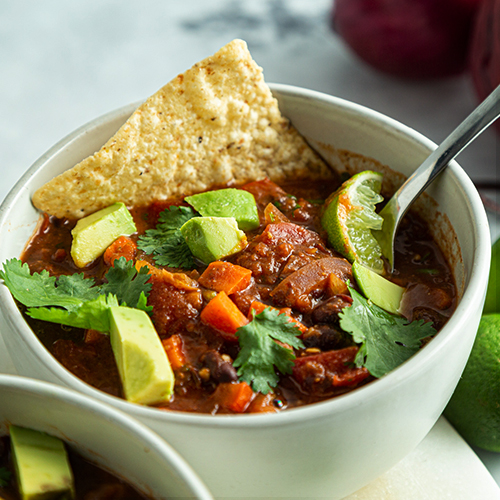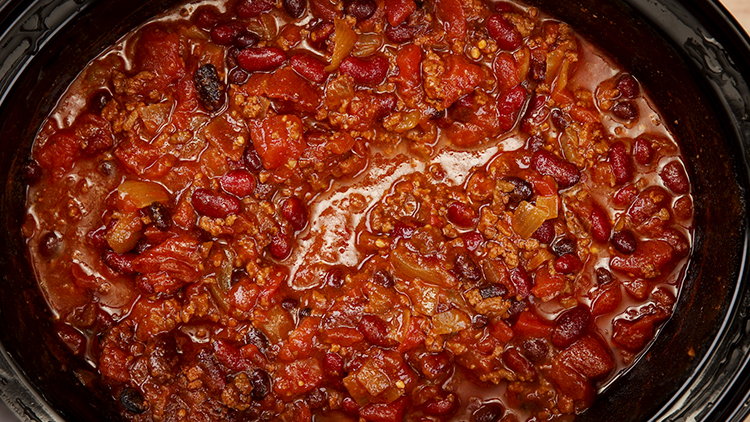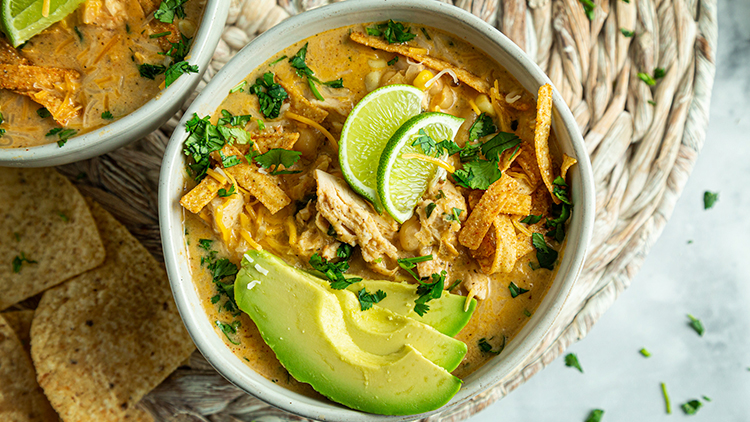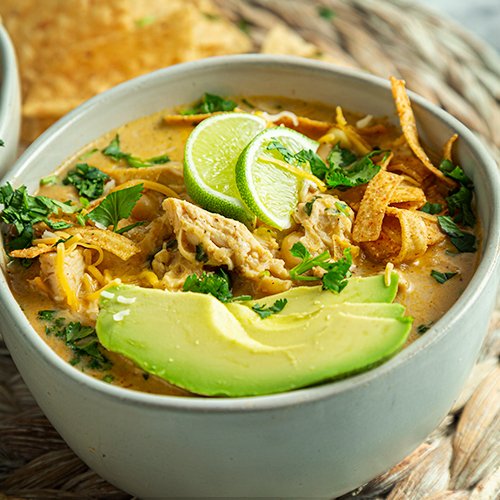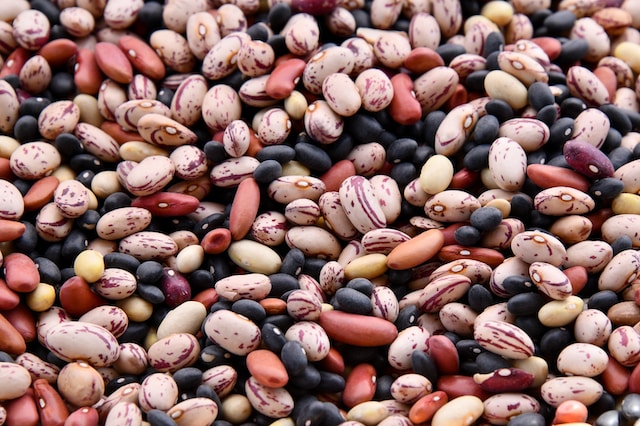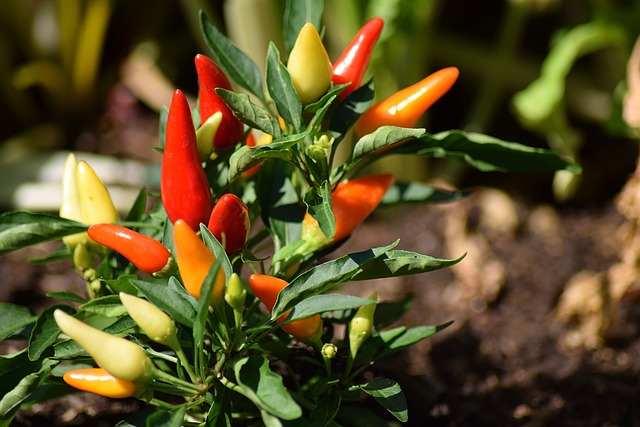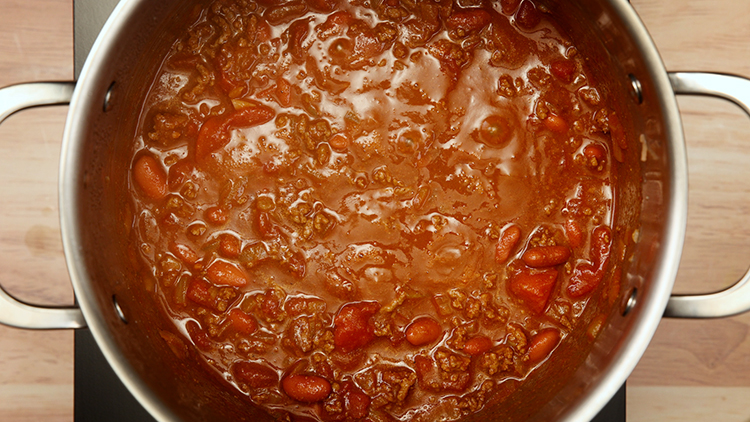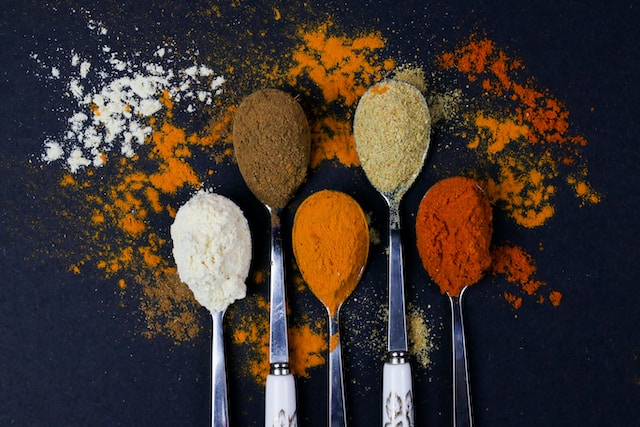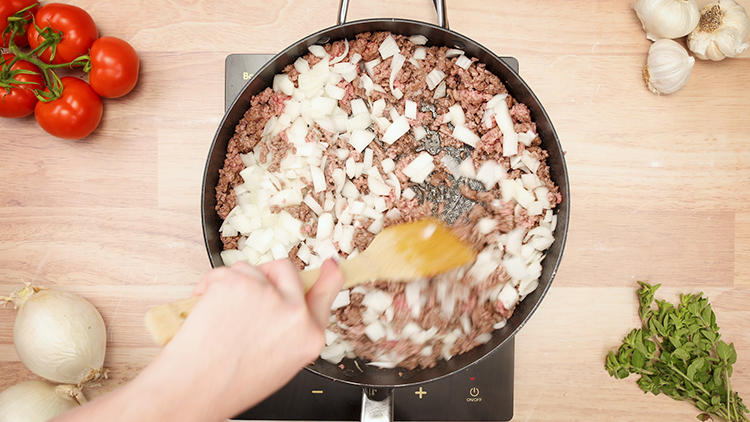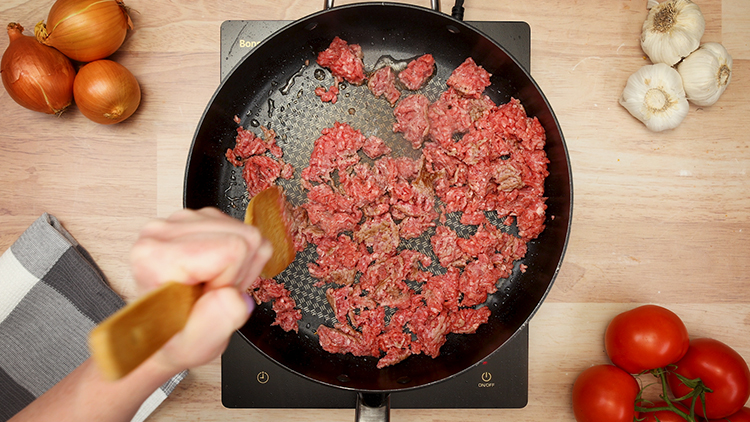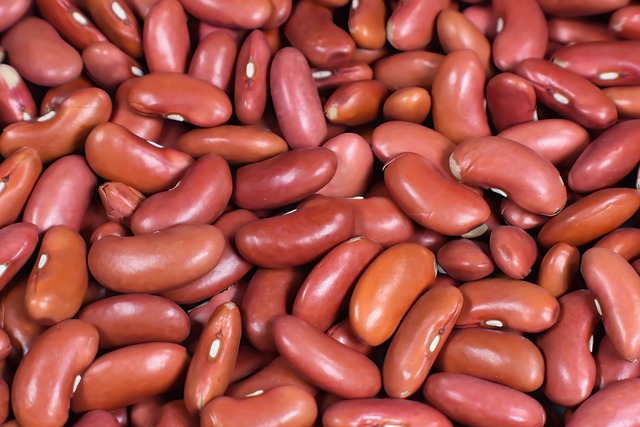What Are the Different Styles of Chili?
While the word “chili” usually conjures up an image of ground beef and beans in a red stew, that’s far from the only type of chili out there. Once you explore what the different styles of chili are, you just might find a new favorite!
Classic Chili
Classic chili is the traditional chili recipe most people think of when they think of chili. It’s meaty, flavorful, and filled with simple ingredients that most people have in their pantry, and it takes less than an hour to make. You can make it as spicy or as mild as you want, and one pot can feed a whole family.
Texas Chili
Texas is the birthplace of chili as we know it today, but Texas chili is different than regular chili. Texas chili is bursting with meaty flavor because it uses chunks of beef cut up into bite-sized pieces as opposed to ground beef. Most importantly, Texas chili doesn’t include any beans, but in some parts of Texas, it doesn’t include tomatoes, either.
Chili Verde
If you’re looking for an authentic Mexican chili, look no further than chili verde. This slow-cooker chili needs plenty of time for all of the flavors to meld together and for the pork to take on a melt-in-your-mouth texture. This is a meal that dates back to the Aztecs, and while it’s seen some changes over the years, this is the traditional chili that started it all.
Green Chili
Green chili is an iconic dish in Colorado and New Mexico that is a variation of the Mexican chili verde. This chili is creamy, warm, and soothing, and it’s simple to put together. Instead of using ground meat, you’ll cut pork shoulder into chunks and combine it with tomatillos, peppers, onion, garlic, tomatoes, cilantro, and oregano in chicken stock. It’s a great slow-cooker recipe that can be served on its own or as a topping for enchiladas.
White Chicken Chili
White chicken chili is creamy, zesty, and packed full of flavor. It’s also quick and easy to make, relying on a rotisserie chicken to shorten the cooking time. You can have this tasty chili on the table in less than an hour!
Turkey Chili
If you like traditional chili but are looking for something leaner without sacrificing taste, turkey chili fits the bill nicely. It comes together very much like a classic chili does, but instead of using ground beef, you use ground turkey instead. Throw in a few extra vegetables and you can increase the nutritional value without making something that tastes like health food.
Vegetarian Chili
If you’re a vegetarian, you don’t have to go without delicious chili. Using fresh vegetables, beans, and an immersion blender to make a thick and creamy texture, you can easily pull together a tasty vegetarian chili. It’s so good that even meat-eaters are sure to like it!
Vegan Chili
Not every recipe adapts well to vegan ingredients, but a great vegan chili is easy to make. You can replicate the meaty flavor and texture found in regular chili with tofu crumbles seasoned with soy sauce, chili powder, smoked paprika, and nutritional yeast. When the chili is fully cooked, your carnivorous friends won’t even be able to tell the difference.
Chili Cheese Fries
Chili cheese fries have been an American staple for years, especially when you’re watching the game or going out with your friends. Chili is a delicious topping for otherwise boring and bland fries that everybody will want a taste of.
Chili Dogs
Chili dogs are a go-to party food, especially in the summer, when this messy meal can be eaten outdoors without the fear of making a mess of the floor. Chili dogs don’t take long to come together, so whether you’re having a party or creating some game-day treats, you don’t have to plan too far in advance to get these on the table.

